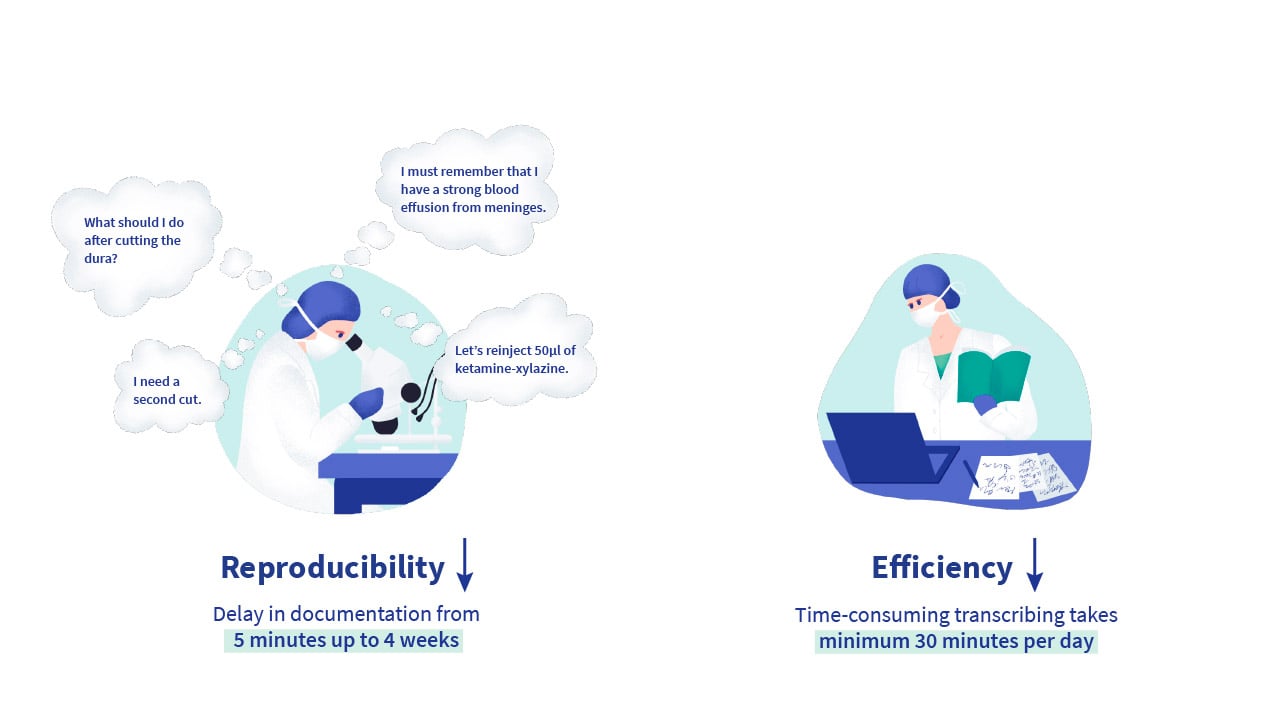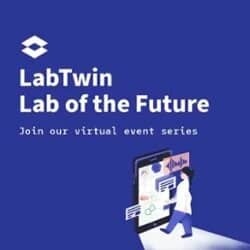Successful lab digitalization requires adoption of lab informatics systems
The story of recent years is the story of the increasing importance – and the increasing quantity – of data in almost every area of business and life.
In pharma, the adoption of digital and cloud technologies is proving essential, not only for managing the sheer volumes of data being generated, but also to analyse the information and uncover the insights that can be gained from the data.
But to really unlock the potential of the integrated, digital ‘Lab of the Future,’ it’s vital that the technology works in partnership with the scientists in the lab.You can have the best digital systems in the world, but if those who work in your lab don’t engage with the technology or cannot use the systems, you will never be able to realize the full potential of your digital lab.
Roadblocks in lab technology integration
Facilitating adoption of the digital lab
Benefits of LabTwin user-centred design
LabTwin: digital gateway to the lab of the future
It’s essential that your lab scientists are fully engaged in your digital transformation because, after all, digital systems are only as good as the information you feed into them.
Roadblocks in lab technology integration
Traditionally, pharma labs have used notebooks and templated sheets to document observations and results from experiments. Increasingly, digital technologies such as LIMS and ELNs* are replacing paper for the recording and storage of experimental data.
However, these digital tools do not integrate seamlessly into the lab workflow and infrastructure. Generally, they cannot be used at the bench and require several clicks and drop-down selections to complete a record, using a keyboard or touchscreen for entry of data. Such interfaces necessitate free hands and full attention, which forces the scientist to repeatedly interrupt the experiment to record results or look up information. When not achieved in a contemporaneous manner, a later transcription of the experiment data into the digital system of record gives rise to inefficient and error-prone workflows.

Current documentation methods are challenging for scientists in the lab and impact both the efficiency and reproducibility
But there is another way. By understanding scientists, and designing and developing from their perspective, lab informatics and equipment companies can deliver modern products that improve research efficiency and agility.
Facilitating adoption of the digital lab
Designed from the lab users’ perspective, a Digital Lab Assistant with a simple and intuitive interface removes these critical roadblocks to digital adoption.

A digital lab assistant provides a lab friendly interface between the scientist in the lab and the digital ecosystem.
Using LabTwin’s voice-activated, hands-free, mobile interface, scientists can easily record data and access information from any part of the lab (See LabTwin in action). This allows simple and efficient, real-time data collection and digitization, and removes the need for scientists to continually interrupt bench work for documentation or to consult SOPs.
Easy to use, LabTwin simplifies the adoption of digital lab workflows, and inspires the scientists and lab technicians to explore the full capabilities and possibilities offered by the digital infrastructure of the lab.
Benefits of LabTwin user-centred design
Through its voice-powered, hands-free interface, LabTwin enables scientists and researchers to collect and record data during experiments quickly and easily and without interrupting their work.

Using voice in the lab allows scientists to collect data in real-time at the bench.
Because voice is the most time-efficient way to record actions and results in the lab, LabTwin saves scientists’ time and helps to increase data quality and quantity.
Equally importantly, LabTwin also enables direct interaction with the lab informatics system, such as ELN or LIMS, and so connects your bench scientists with your digital ecosystem. With LabTwin:
Realtime documentation
With no delay in documentation, there is less room for error or loss of critical information. Typically, using LabTwin, data errors are significantly reduced, and
50% more relevant data is collected, so deriving greater value from each lab procedure.
In addition, scientists can structure and standardise data at the point of collection, with customisable templates for guided data capture, data labelling, and automatic report generation.
Enhanced data accessibility
With LabTwin, scientists can directly access data held in the IT/informatics systems during an experiment at the bench.
Using voice-powered queries the scientists can consult any data they need, access and follow audiovisual SOP guidance, and provide inventory and results to the LIMS.
This improves lab efficiency and reduces contamination risks.
Automated data processing
Data is captured and digitized in real time through hands-free, voice-activated control. Therefore, no more need to re-transcribe and manually process documentation at the end of the day.
Removing delay in documentation can significantly improve the quality and reliability of the data derived from lab experiments. This can also make it easier to reproduce the experiment and the results.
Streamlined compliance
Documentation on paper, or using a keyboard, requires frequent interruptions to bench workflows, additional transcription, and also reduces traceability of human operations at the bench.
Direct, voice-activated documentation at the bench with LabTwin enables scientists to validate their data or send it for review without interrupting their experimental work. Additionally, it provides an audit trail for quicker and easier ISO 27001 certification and 21 CFR Part 11 compliance.
LabTwin: digital gateway to the lab of the future
LabTwin user-centred design helps your scientists work smarter and do more of the work that is most rewarding for them, and the business.
By helping to reduce manual processes in the lab and providing frictionless access to scientific data, LabTwin can help you improve process efficiency and unlock the power of data to scale innovative research.

A digital lab assistant provides hands-free data collection with a user-friendly interface which saves time and increases data quality
Learn more about LabTwin with a tailored introduction and live demo. Let’s build the Lab of the Future together. Book now.
*LIMS: Laboratory Information management System. ELN: Electronic Laboratory Notebook











